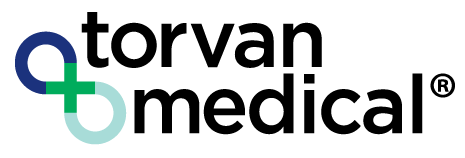Introduction
Ergonomics is the study of optimizing work environments to fit human needs. Good ergonomic design can help mitigate the toll of physically demanding professions. In healthcare, where workers often spend long hours performing repetitive tasks in static positions, ergonomic design can play a crucial role in maintaining staff well-being and productivity.
Poor ergonomic design in hospital workspaces can contribute to repetitive strain injuries (RSI) and musculoskeletal disorders (MSD), which impact both productivity and patient care. According to recent statistics from the U.S. Bureau of Labor Statistics, nearly 40% of workplace injuries in healthcare are related to overexertion and repetitive motion injuries, with back and wrist injuries being among the most common. Addressing these hazards with ergonomic solutions is one of the best ways to foster a safe, efficient healthcare environment.
Understanding Ergonomic Hazards in Hospitals
Healthcare professionals frequently face the three most common ergonomic hazards: repetitive motions, improper workstation setups, and prolonged standing.
- Repetitive motion injuries – Repetitive tasks such as preparing surgical instruments, processing specimens, or even typing on a computer for extended periods, can lead to conditions such as carpal tunnel syndrome. When workstations are not ergonomically designed, staff can find themselves forced into unnatural positions, placing continuous strain on their joints and muscles. For example, an SPD technician who must reach for tools or bend awkwardly to wrap instrument sets throughout their shift may find themselves suffering from one or more RSI.
- Musculoskeletal strain from poorly designed reprocessing equipment – Sterile processing departments are essential to ensuring medical instruments are properly cleaned and disinfected. However, poorly designed reprocessing sinks and workstations can contribute to strain in the back, shoulders, and wrists. Many reprocessing sinks are set at a fixed height, forcing employees to hunch over while performing common reprocessing tasks. This unnatural posture can lead to chronic pain and long-term musculoskeletal disorders. (US Department of Labor, OSHA, Ergonomics – https://www.osha.gov/ergonomics)
- The impact of prolonged standing and incorrect posture – Many healthcare workers spend hours on their feet. Prolonged standing in static positions can cause lower back pain, circulatory issues and foot strain. Additionally, being forced into an incorrect posture, such as leaning over sinks and tables, or bending to reach medical equipment, exacerbates the problem. Left unattended, these hazards may lead to long-term health issues that can increase absenteeism, or even shorten a professional’s career. (US National Library of Medicine, PubMed Central, https://pmc.ncbi.nlm.nih.gov/articles/PMC4591921/)
How Ergonomics Can Improve Safety and Efficiency in Healthcare
Integrating ergonomic solutions into healthcare settings provides numerous benefits, including:
- Reducing staff injuries through ergonomically designed workstations – One of the simplest and most effective ways to reduce workplace injuries is to provide equipment that has been designed with the comfort of the end-user in mind. Height-adjustable workstations help staff maintain proper posture while working, which can help reduce the risk of back and neck strain. Ergonomic chairs, anti-fatigue mats, and sit-stand workstations also enable staff to maintain posture and position, thereby providing additional assistance in preventing injuries from strain. Studies have shown that hospitals with well-designed ergonomic workstations see a significant decrease in staff-reported musculoskeletal pain. Even something as simple as a sink edge designed for wrist comfort while cleaning instruments can help reduce strain and fatigue and decrease wrist injuries. (US National Library of Medicine, PubMed Central, https://pmc.ncbi.nlm.nih.gov/articles/PMC7068592/)
- Enhancing productivity by optimizing workflow – Ergonomic considerations, when built into hospital and laboratory design, help enable staff to complete tasks more efficiently with less fatigue. For example, ensuring that frequently-used tools and instruments are within easy reach reduces unnecessary bending and reaching. Additionally, automated equipment, such as automated flushing and rinsing devices, can eliminate repetitive manual tasks, allowing staff to focus on more critical responsibilities. (Occupational Health & Safety, OH&S, https://ohsonline.com/articles/2020/02/13/the-relationship-between-msds-and-the-workplace.aspx)
- Creating a safer environment for both patients and staff – Improving ergonomics doesn’t just benefit healthcare workers—it can also enhance patient safety. Fatigued and injured staff are more likely to make errors, which can have serious consequences in a medical setting. By designing workspaces that promote comfort and efficiency, hospitals can reduce the risk of mistakes while improving overall patient care. Furthermore, ergonomic equipment and transport vehicles reduce strain on healthcare workers, minimizing the risk of injury during transport. (Health Service Safety Investigations Body – https://www.hssib.org.uk/patient-safety-investigations/the-impact-of-staff-fatigue-on-patient-safety/investigation-report/)
Torvan Medical’s Ergonomic Solutions for Healthcare
Torvan Medical is a leader in healthcare equipment manufacturing. We are committed to improving ergonomics in medical environments. Our innovative solutions include:
- Ergonomic Workstations – Our height-adjustable workstations are designed to help staff maintain proper posture while working, significantly reducing strain-related injuries. These workstations are designed with flexible height settings, allowing healthcare professionals to switch between sitting and standing positions with ease. Additionally, they feature ergonomic accessories such as keyboard trays, monitor arms, and cushioned wrist supports to promote comfort and efficiency. (Journal of Environmental & Occupational Science – https://www.jenvoh.com/jenvoh-articles/musculoskeletal-complaints-among-central-sterile-supply-technicians-in-relation-to-physical-and-psychosocial-factors-at-.pdf)
- Reprocessing Sinks with 45° Wrist-Friendly Edges – Designed to support proper wrist alignment, these sinks minimize repetitive strain injuries and enhance comfort during extended use. Unlike traditional reprocessing sinks, which often require users to hold awkward wrist positions, Torvan Medical’s Cleanstation reprocessing sinks incorporate slope-edged basins, designed to reduce strain on the hands and arms. Adjustable sink heights further ensure that staff can work comfortably without hunching over, allowing staff to focus on safety and efficiency.
- Pathology Grossing Stations – Engineered with staff safety in mind, our grossing stations feature ergonomic configurations that reduce bending and awkward postures. These stations include height-adjustable work surfaces, integrated task lighting for reduced eye strain, and strategically placed storage compartments to minimize unnecessary movement. By designing workstations that align with natural human movement, Torvan Medical is helping pathology professionals perform their tasks with greater ease and accuracy.
Ergonomic Solutions in Action
Torvan Medical’s height-adjustable workstations and wrist-friendly reprocessing sinks are already making a notable difference in hospitals and laboratories. In facilities that have implemented these solutions, staff report lower instances of back pain, wrist discomfort, and fatigue-related errors. Hospital administrators have also noted improvements in workflow efficiency, as ergonomic equipment reduces the time required for repetitive tasks. (Journal of Environmental & Occupational Science – https://www.jenvoh.com/jenvoh-articles/musculoskeletal-complaints-among-central-sterile-supply-technicians-in-relation-to-physical-and-psychosocial-factors-at-.pdf)
For example, a major North American hospital recently adopted Torvan Medical’s ergonomic reprocessing sinks in its central sterile department. Within six months, facilities reported a 30% reduction in reported wrist injuries among staff. Additionally, employee satisfaction scores improved, with staff citing greater comfort and ease of use in their daily tasks.
Conclusion
Investing in ergonomic hospital and laboratory design is a long-term strategy that can benefit both staff and institutions. By integrating ergonomic workstations and equipment, healthcare facilities can create a safer, more compliant, and highly efficient working environment. The benefits extend beyond injury prevention—ergonomic improvements lead to higher job satisfaction, reduced turnover rates, and improved patient care outcomes. (Journal of Hospital Management & Health, https://jhmhp.amegroups.org/article/view/8440/html)
Torvan Medical remains at the forefront of this movement, providing cutting-edge ergonomic solutions that prioritize healthcare professionals’ health and productivity. Explore our range of ergonomic medical equipment today and take the first step toward a safer, more efficient workplace. Contact us to learn more about how our solutions can be tailored to meet the unique needs of your healthcare facility.


